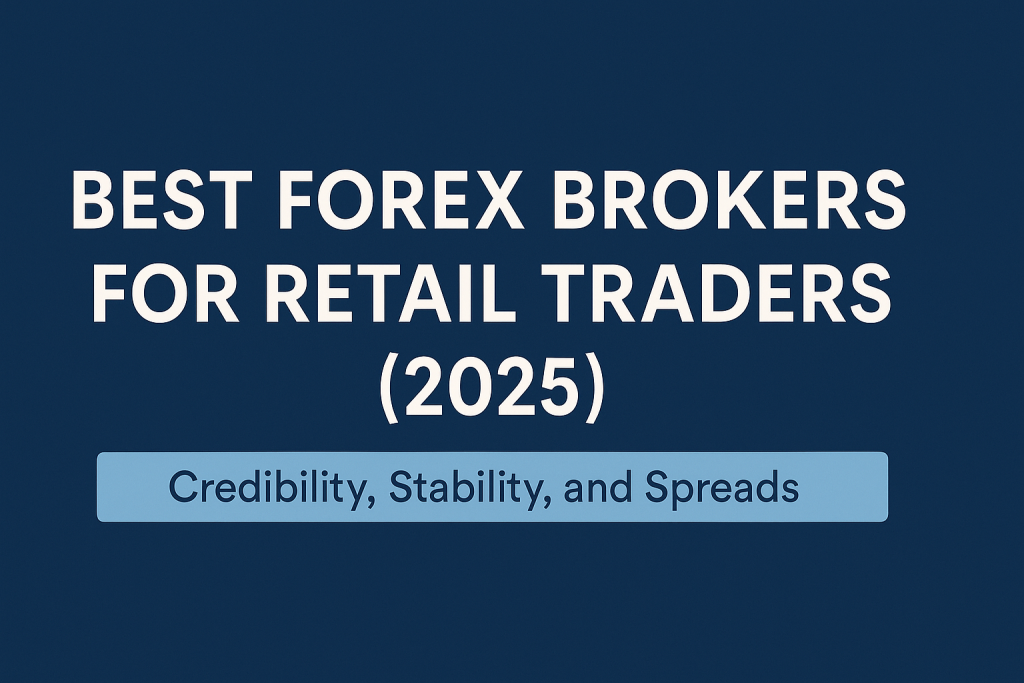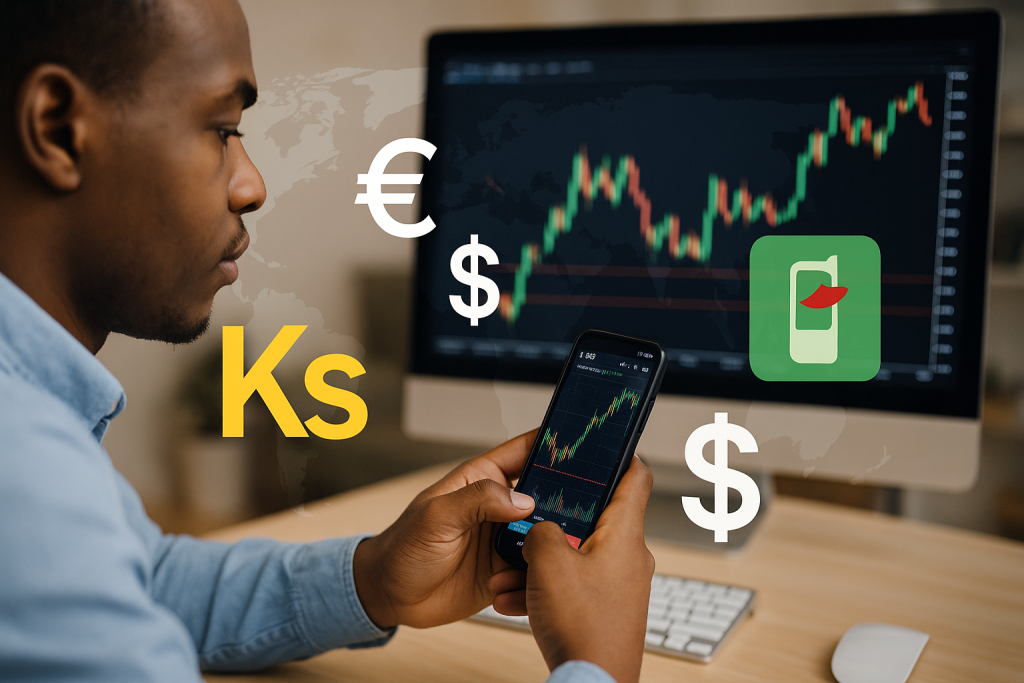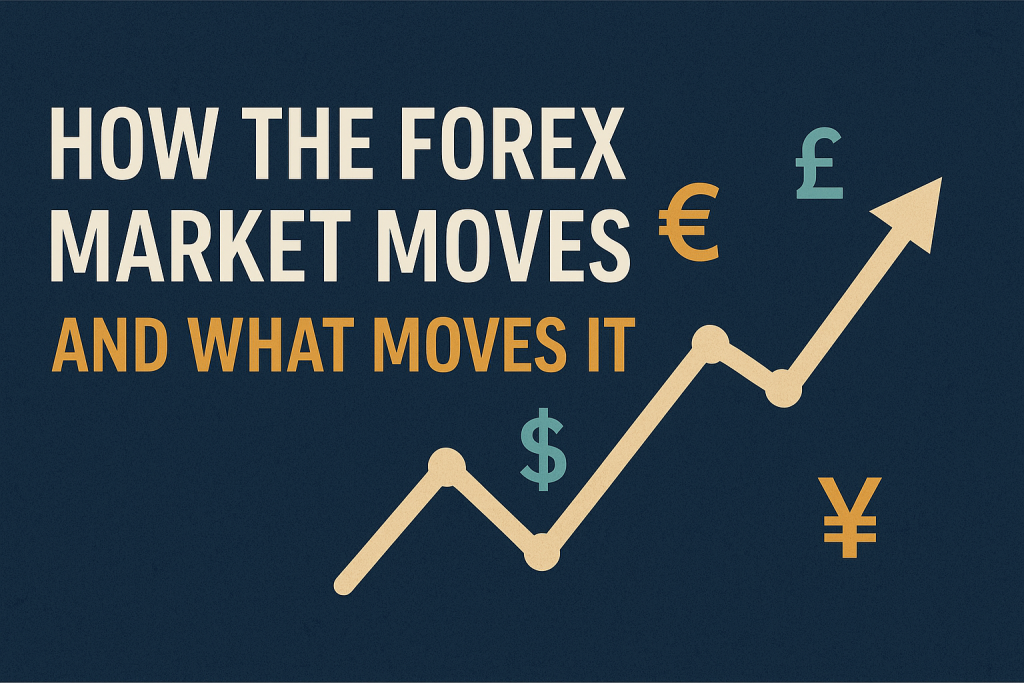Why the broker you pick matters
Retail FX is a leveraged, over-the-counter market. Your broker is your venue, your counterparty (directly or indirectly), your pricing feed, and your risk manager. That means broker choice directly impacts:
- Safety of funds (segregation, capitalization, oversight)
- Pricing and execution quality (spreads + commissions + slippage)
- Fair dealing (conflicts, risk management during volatility)
- Longevity (a well-capitalized firm is more likely to weather shocks)
In short: the “best” broker isn’t just the tightest spread—it’s the one that’s well-regulated, well-capitalized, transparent on costs, and consistently reliable.
How I evaluated brokers
- Regulatory pedigree & client protections
Look for top-tier regulators (U.S. CFTC/NFA, U.K. FCA, EU regulators like BaFin/CySEC, Singapore MAS, Australia ASIC). Extra points for global multi-licensing and clear public disclosures. - Financial stability & scale
Public financials (annual reports, capital ratios, client assets, excess regulatory capital). Bigger and better-capitalized firms tend to run tighter risk and operations. - All-in trading costs
Spreads plus commissions and any financing/“swap” charges. - Execution quality & market access
Depth/liquidity sources, number of FX pairs, and whether pricing is marked up or commission-based institutional style. - Platforms, tools & extras
Range (MT4/MT5/cTrader/proprietary), research, APIs, and usability—using respected review methodologies as grounding.
The shortlist: 8 excellent brokers for most retail traders
Note: Availability varies by country. Always open the legal docs for your local entity; protections and costs can differ materially by jurisdiction.
1) IG — Best all-round for most retail traders
Why it stands out: FTSE-listed parent, strong financials, broad market access, robust proprietary platform plus MT4, transparent fees.
Stability: IG Group publishes detailed reports; recent filings highlight strong cash generation and disciplined capital returns, indicative of a resilient balance sheet.
Costs: IG posts minimums and average spreads by pair (e.g., EUR/USD minimum 0.6 pips on MT4; averages by time window also disclosed), which is more transparent than “from X pips” marketing alone.
Good for: Traders who want a big, well-regulated brand with excellent platforms and research, and who value clarity on typical spreads rather than just minimums.
2) FOREX.com (StoneX Group) — Deep resources under a Fortune 500 parent
Why it stands out: Owned by StoneX (NASDAQ: SNEX), a Fortune 500 risk-management group; broad global footprint; multiple account types.
Regulation: U.S. entity is a CFTC-registered FCM/RFED and NFA member; StoneX shows extensive compliance documentation across divisions.
Costs: “Spread-only” accounts advertise EUR/USD “as low as” ~1.2 pips; always compare against commission-based alternatives and your local entity’s schedule.
Good for: U.S. traders needing a CFTC/NFA venue; global traders who value a large parent company and multiple platforms/markets.
3) Interactive Brokers (IBKR) — Institutional-style pricing for advanced FX traders
Why it stands out: Direct access to quotes from ~17 major FX dealers, institutional routing, commission-based pricing, and public capitalization/excess regulatory capital disclosures.
Costs: Commission tiers 0.08–0.20 bps (with minimums) and very tight raw spreads (EUR/USD can be ~0.1 pip before commission). This model often beats “spread-only.”
Good for: Cost-sensitive, active or API-driven traders who understand commission models and require robust order types/routing.
4) CMC Markets — Strong balance sheet; excellent platform and pricing disclosure
Why it stands out: London-listed, consistent profitability; detailed investor comms; competitive FX pricing on a mature proprietary platform.
Stability: Net operating income in FY2024 rose to ~£332.8m, with management signalling continued strength—evidence of scale and operating leverage.
Good for: Traders who appreciate a polished platform with comprehensive market coverage from a profitable, well-regulated U.K. broker.
5) Saxo — Multi-asset powerhouse with high capital ratios
Why it stands out: A full-spectrum multi-asset bank with strong total capital ratios and large client asset base—useful for FX plus futures, options, bonds, and more.
Stability: Reported total capital ratios around the high-20s% and record profitability in 2024, supporting durability through cycles.
Good for: Cross-asset traders who want bank-grade infrastructure and funding products alongside FX.
6) OANDA — Trust and multi-region regulation; clear spread info
Why it stands out: Long-standing brand with multiple tier-1 licenses (U.S., U.K., Canada, Singapore, Australia, Japan) and transparent spread/margin pages.
Costs: OANDA publishes spread and historical spread references; verify typical live hours for your region/entity.
Good for: Traders who prioritize a conservative, multi-regulated broker and want simple account setups with decent research tools.
7) Pepperstone — Tight pricing with broad global licensing (incl. Kenya)
Why it stands out: Well-known for low spreads/fast execution on MT4/MT5/cTrader; holds licenses from FCA, ASIC, DFSA, CySEC, BaFin—and Kenya’s CMA (useful for East African traders).
Costs: Public account pages explain symbol suffixes and pricing streams by jurisdiction—handy for understanding where your quotes come from.
Good for: Cost-conscious traders (including in Kenya) who want top-tier platforms and local regulatory cover.
8) XTB — Publicly listed in the EU with growing profits
Why it stands out: Listed broker with strong 2024 profitability and increasing client metrics; offers a popular proprietary platform.
Costs: Publishes spreads and education around costs; always compare live quotes on your account type.
Good for: Traders who want an EU-listed broker with straightforward UX and competitive pricing.
Spreads vs. commissions: what’s actually “cheaper”?
- Spread-only accounts roll the broker’s fee into the bid/ask. What you see is what you pay (plus swaps), but the displayed spread can vary with liquidity and news.
- Commission-based accounts (e.g., IBKR) show ultra-tight “raw” spreads and add a small commission per notional. When you sum spread + commission, these can beat spread-only setups—especially for active traders.
How to compare apples to apples:
- Check average (not just minimum) spreads during your trading hours. IG publishes average by time window—this is best-practice transparency.
- Add any commission and typical overnight funding (swaps). Pepperstone and others document swap mechanics.
- Sanity-check claims using third-party data aggregators, keeping in mind these don’t capture execution/slippage.
Credibility checklist (use this before you fund)
- Verify your local entity and license.
The same brand can have multiple subsidiaries; protections differ by jurisdiction (e.g., U.S. CFTC/NFA vs. U.K. FCA vs. MAS/ASIC). Always confirm on the broker’s regulatory page and the regulator’s register. - Look for financial strength signals.
Public companies (IG, CMC, XTB) and banks (Saxo) publish audited reports, capital ratios, and client asset figures—these are confidence markers. IBKR publishes excess regulatory capital and equity levels in SEC filings. - Assess pricing transparency.
Do they publish average spreads and spell out fees (commissions, swaps, conversion costs, inactivity fees)? IG and OANDA provide detailed spread pages/history; FOREX.com explains its account pricing models clearly. - Platform & access.
If you need raw pricing or API access, commission-based models and multi-dealer liquidity (IBKR) can be attractive. If you want refined research and a clean UX, proprietary platforms (IG, CMC, XTB, Saxo) shine. - Local fit (very important).
For example, Kenyan traders may prefer a CMA-licensed broker (Pepperstone Kenya) for local protections and funding convenience.
Match the broker to your trading style
- Scalpers/day traders: Prefer commission-based or proven tight average spreads during your hours. Test fills and slippage on a small funded account first. IBKR or a broker with “raw” accounts can be cost-efficient.
- Swing traders: Look closely at overnight financing (swaps) and margin on exotics; an extra 0.1–0.2 pip spread won’t matter as much as poor swap terms. Pepperstone and others document swap charges and calculation logic.
- Multi-asset investors: Saxo, IG, CMC, and IBKR stand out for equities, options, futures, bonds, and FX in one place—fewer transfers, better portfolio oversight.
- U.S. residents: You’ll typically choose between FOREX.com or OANDA (both CFTC/NFA venues). Compare all-in costs (spread-only vs. commission models), platforms, and research tools.
Red flags to avoid
- Unlicensed offshore entities pushing very high leverage (e.g., 1:1000) without clear disclosures or investor protections.
- No audited financials and vague ownership.
- “Fixed 0-pip spreads” marketing without realistic conditions or caps on widening.
- No clear segregation of client funds or disclosures about where client money is held.
- Aggressive bonuses tied to trading volume or withdrawal restrictions.
Quick comparison snapshot (what to expect)
- IG: Transparent average spreads; big selection; strong financials; top education & research.
- FOREX.com (StoneX): Global, well-capitalized parent; U.S.-friendly; multiple account types; spread-only as low as ~1.2 on EUR/USD (check live).
- Interactive Brokers: Ultra-tight raw spreads + small commission; deep liquidity; best for advanced/active users.
- CMC Markets: LSE-listed, profitable; strong proprietary platform and disclosure.
- Saxo: Bank-level capital and multi-asset depth; excellent for cross-asset portfolios.
- OANDA: Multi-region tier-1 licensing; clear spread pages and historic spread data.
- Pepperstone: Tight pricing; many top-tier licenses including Kenya CMA; fast MT4/MT5/cTrader.
- XTB: EU-listed with rising profits; clean platform and education.
How to choose (a simple, safe workflow)
- Shortlist 2–3 brokers available in your country with top-tier licenses. Verify on the broker’s site + regulator register.
- Open demo + small live accounts with two of them. Trade your exact strategy during your normal hours for a week.
- Measure all-in cost: Log effective spread (difference between fill and mid), commission (if any), and realized slippage.
- Stress-test in news hours: Observe how spreads widen and whether orders fill fairly in volatile periods.
- Operational checks: Try deposits/withdrawals, support response times, and platform stability.
- Pick the one with lower measured all-in cost and better execution reliability—not just the marketing minimums.
FAQs
Q1) What’s more important—spreads or commissions?
Both matter; the only figure that truly matters is total cost per trade (spread + commission + financing + slippage). Commission models often have tighter raw spreads; spread-only models are simpler. Test both.
Q2) How can I tell if a broker is financially strong?
Look for audited annual reports, capital ratios, and excess regulatory capital disclosures. Public companies and banks (IG, CMC, XTB, Saxo) and SEC filers (IBKR) provide the best visibility.
Q3) Are average spreads reliable?
They’re better than minimums, especially when brokers publish time-weighted averages across trading sessions (e.g., IG’s tables by time window). Still, your own trading window can differ—so confirm with live tests.
Q4) What protections do I actually have?
Depends on your entity. U.S. traders use CFTC/NFA venues (OANDA, FOREX.com). U.K. entities fall under FCA (and may have FSCS coverage for certain failures). Protections vary by region—always check your specific entity.
Q5) I’m in Kenya—who’s locally regulated?
Pepperstone holds a Capital Markets Authority (CMA) license in Kenya in addition to top-tier global licenses, which can simplify funding and local compliance.
Q6) Do third-party “best broker” lists matter?
They’re useful starting points if the methodology is transparent and testing windows are recent. Still, verify data recency and test for yourself.
Q7) How tight can EUR/USD get?
Institutional-style venues (e.g., IBKR) can show raw spreads around ~0.1 pip at liquid times—then add a small commission. Retail spread-only models may quote ~0.6–1.2 pips headline, but confirm averages.
Bottom line
If you want the safest, most cost-effective setup, your shortlist should include IG, FOREX.com (StoneX), Interactive Brokers, CMC Markets, Saxo, OANDA, Pepperstone, and XTB. They pair serious regulation and financial strength with competitive, transparent pricing. The final decision comes down to your country of residence, trading hours, platform preference, and measured all-in costs during a live test.
Trade carefully, size responsibly, and let data from your own fills make the call.
Trading forex involves significant risk of loss and is not suitable for all investors. Always consider your objectives, experience, and risk tolerance before trading.



